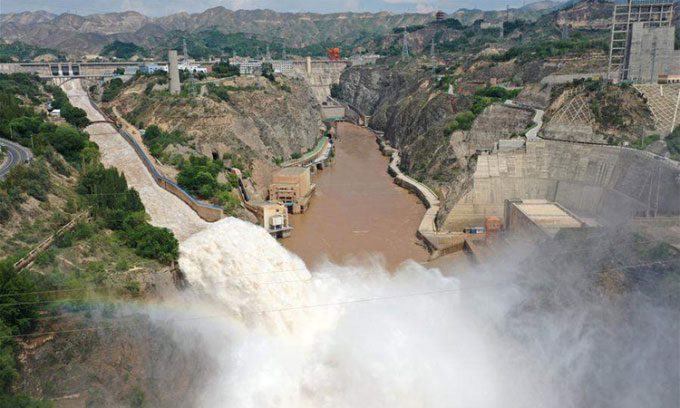On April 1, China reported impressive figures related to the Liujiaxia Hydropower Station in the northwest region of the country after more than half a century of operation.

Liujiaxia Hydropower Complex. (Photo: Xinhua)
Located on the main stream of the Yellow River in Yongjing County, Gansu Province, the Liujiaxia Dam is China’s first megawatt hydropower facility. It consists of 5 units with a total installed capacity of up to 1.225 million kW.
As of April 1, marking its 53rd anniversary, the project has generated a cumulative total of 258.7 billion kWh of electricity, equivalent to burning 90.405 million tons of coal in thermal power generation, thereby helping reduce 236.86 million tons of CO2 emissions.
The Liujiaxia Hydropower Station is part of the Liujiaxia Hydropower Complex, a large-scale multipurpose water project on the main stream of the Yellow River. In addition to electricity generation, it has aided in flood control and has been pivotal in the development of Yellow River conservation projects.
According to Li Pingdong, the director of the station, Liujiaxia has interconnected the electricity networks of Shaanxi, Qinghai, and Gansu, promoting agricultural development in northwest China.
Each year, the Liujiaxia reservoir provides 800 million to 1.2 billion cubic meters of water for irrigation in the spring across Gansu, Ningxia, and Inner Mongolia. It also meets the clean water needs of 3.8 million people in Lanzhou, the capital of Gansu Province, supplying approximately 550 million to 830 million cubic meters of water annually.

















































